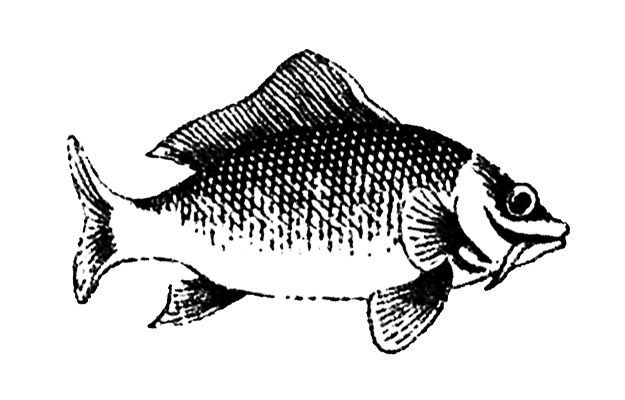
The three mortal sins of evolutionary psychology: naivety, naivety and naivety.
A long, long time ago, hundreds of thousands of years before the present, men were real men who hunted mammoths, and women were real women who hunted interesting men, so as to later dote over their children and serve them beer. People died young, and their lives were continually sculpted by natural selection. The men who were the best hunters lived longest and fathered plenty of children, and the women who succeeded in having offspring by the best hunters had the strongest and best-fed children.
Men did not take care of their offspring, because they were off hunting mammoths. So women, who raised the children, had to be finicky about their choices and find partners with good genes; after all, this was an investment for long years.
That is why, to this day, men sleep around, whereas women are rather reluctant to have sex. It takes a lot of persuasion to finally get them to agree, and they are hardly ever interested in casual sex. The best way to convince a woman is to show skill at obtaining the resources needed to bring up children. For example, by presenting a killed mammoth or, in a pinch, a sports car and a golden watch. That is because men want sex (so as to father plenty of children), whereas women want love. And sports cars and expensive watches are essential elements of such love.
This is precisely the picture that emerges from writings on evolutionary psychology, a field of study that attempts to explain all human behaviour in terms of the effects of evolution. Of course, this picture is largely exaggerated, but I must admit that I find it very hard to write about evolutionary psychology without mocking it, as I have been doing above. Let me now explain why.
Feathers and brains
“Nothing in biology makes sense except in light of evolution,” the geneticist Theodosius Dobzhansky once quipped, and he was quite right. Sooner or later, every branch of biology starts asking questions about the sense, or functions, of unusual animal behaviours or certain ‘inventions’ of nature, such as colourful feathers or bird songs. Why do birds have colourful feathers? Why do they sing? In order to attract mates. If a male nightingale did not sing, another bird, one that has singing in its genes, would steal away his female mate, and the genes of the silent nightingale would become lost in the abyss of time. Thus, the function of the song of a nightingale is to attract female mates.
In biology, when we study functions, we invariably arrive at questions concerning evolution and natural selection. Therefore, it is essentially no wonder that some scientists, having answered questions about the singing of nightingales and the colourful feathers of birds-of-paradise, felt tempted to provide similar answers to questions concerning the behaviour of humans. After all, our brains are products of evolution too. What’s more, our evolution took place in very distant times. We may be dressed up in synthetics and surrounded by electronics; we may journey into space (well, at least some of us), but we still have the same brains as our ancestors who ran around the savanna in search of something to eat.
Based on this premise, evolutionary psychology tries to tell us what traits we inherited from those who lived in ancient times. While doing so, however, it commits three cardinal sins.
Risky speculation
The first of these sins is a naïve fondness for stringing together stories. It is easy to compose narratives that explain the phenomena we observe around us. Does it seem to us that men show a greater propensity for risk-taking? This is surely because they hunted, so they had to take risks to obtain food, while women sat in huts and looked after children. But note that it would be just as easy to explain the very opposite assertion. So, women are more inclined to take risks? Pfft, that’s a cinch to explain! Men often faced dangerous situations, so natural selection forced them to act cautiously, thus eliminating the careless. Women, who were more inclined to take risks, could at worst get burned when sitting by a fire. See how easy it is? Regardless of which of these opposing views we believe, we can always concoct an ‘evolutionary’ explanation.
But modern evolutionism involves something more than just storytelling. In order to prove that natural selection is at work, certain conditions must be met. More specifically, we must prove that the trait in which we are interested has a genetic background, that it exhibits variation (some have it, others do not), and that such variation determines evolutionary success (for example, the number of offspring or survival chances). Sometimes, we can also find traces of evolution directly in the DNA.
Here is an example. All mammals lose the ability to digest lactose – a sugar found in the milk of mammals – when they grow older and stop drinking milk. They no longer need the enzyme that breaks down lactose (which is called lactase), so its production into adulthood would be wasteful. This holds true for all mammals, except for some humans, which we now believe is an adaptation to the herding lifestyle. The mutation that destroyed the mechanism that turned off lactase production in adulthood occurred independently in several human populations, such as those in Africa and Europe. I always say that this mutation gives me a unique ability, similar to the abilities of X-Men: when I drink a litre of milk, I do not get gassy or have diarrhoea. Most people in the world are not so lucky!
We know that this mutation occurred as a result of natural selection, because we have all the right premises in place: a clearly defined genetic background (specific mutations in a specific gene), variation (some have the mutation, others do not), and a clear relationship to evolutionary success (an additional source of food, namely cow milk). Traces of natural selection are even evident in our genome in the immediate vicinity of that mutation!
All of those premises are absent, however, from most of the writings of evolutionary psychologists. Let us take a closer look at the example above, involving the propensity for risk-taking. Above all, we cannot really even claim that men have some greater propensity for taking risks than women – scientific studies show that everything depends on the type of risk. Worse still, it is hard to say if this trait is determined genetically in any way. However, we can be 100% certain that it is culturally determined to at least some extent, because it is different across different cultures. And even if we assume that genes do play a certain role here, could anyone really demonstrate that a greater propensity for risk-taking results in greater reproductive success? This is heavily dependent on the circumstances! Should Palaeolithic hunters show caution, or should they act with bravado? What about the Nepalese honey hunters from the Kulung culture who climb 100 metres up bamboo ladders to harvest the honey that is produced by the giant Himalayan honeybees and contains a hallucinogenic, grayanotoxin? Are they exceptionally inclined to take risks or, on the contrary, are they able to successfully harvest the precious honey thanks to their carefulness, professionalism and years of learning?
In human evolution, there is one more problem at play: we in fact have no idea what the mythical savannas of evolutionary psychologists actually looked like. Present-day communities that live in Palaeolithic conditions vary greatly. Not only do we have no idea what life in the savannas of that period was really like, but also we remain unable to say whether that environment was the same for different human groups. The pictures that are sometimes sketched out by evolutionary psychologists are as naïve as they are completely spurious – even present-day savannas are characterized by a rich and diverse environment.
Blondes infested with parasites
The second sin of evolutionary psychology may be called naïve adaptationism: the belief that every behaviour and every trait has its function, and that each such function can be considered in isolation.
In their book A Natural History of Rape, Randy Thornhill and Craig T. Palmer argued that rape is a product of evolution, because it is a strategy that benefits men (a lot of children without the need to hunt for sports cars). The book drew a great deal of criticism, including from other evolutionists (28 of them even wrote critiques of it in the publication Evolution, Gender, and Rape). The problem was not that Thornhill and Palmer attempted to provide an evolutionary explanation of human psychology, but that they did so in a naïve and misguided manner that ultimately led them to draw morally dubious conclusions. This was summed up very aptly by Frans de Waal: “Rape occurs at the interface of sex and power, two rich and complex areas of human behaviour that are obviously interconnected. It is hard to see how any serious treatment of rape can rip it from this larger context, explaining it as an isolated behaviour.”
For modern evolutionists, naïve adaptationism is an object of constant ridicule. Some time ago, a certain game became popular on Twitter, involving finding ways to prove that mankind evolved in space. For example, why do people have sex face-to-face so often? After all, most of our closest relatives, except for bonobos and sometimes chimpanzees, copulate more ferarum, or doggy style. Twitter explains: this is because humans were hindered in copulation by the life support system backpacks worn by astronauts.
In turn, the neurologist Vilayanur S. Ramachandran once sent an article to the none-too-serious journal Medical Hypotheses arguing that evolution made men prefer blondes, and one of the reasons was that it was easier to see if blondes were infested with parasites. Of course, this was a joke at the expense of evolutionary psychologists, but some of the apologists for that school actually fell for it.
Natural selection is not all-powerful. Mathematical models of population genetics, confirmed in various experiments, set certain boundaries of what evolution might be able to achieve by means of selection. And there is no way that this mechanism could be responsible for the entire abundance of human behaviours.
It’s more complicated
Here is where we come to the third sin, which is, again, a kind of naivety. This time, it is the naivety of applying evolutionary simplifications to what is a highly complex reality in which the human (and not only the human) psyche functions. Herbert Spencer, a friend of Darwin’s, coined the term “survival of the fittest”, which became the most popular nutshell-term encapsulating the theory of evolution, replacing Darwin’s “natural selection”. It was also quickly seized upon by many exceptionally unpleasant individuals to justify various racist, misogynist and totalitarian opinions – if the strongest win out even in nature, this gives us the moral right to harass inferior people with different skin colours, sexual preferences, or lower earnings. Meanwhile, evolution is not about survival alone, which Darwin wrote about extensively, and nor can the things that happen among fruit flies be used to justify racism and genocide. Spencer’s metaphor did a disservice to evolutionism by reducing it to a single aspect that works better in Daphnia species than in species with extensive social structures. Interestingly, Darwin was well aware of other phenomena, such as cooperation between unrelated members of a given species. Such cooperation cannot be explained in terms of the “survival of the fittest”.
Humans are complicated; we have our culture, psyche, complex relationships, rich sex lives, and social ties. Reducing all these things to a simplified picture similar to the one that I painted at the beginning of this article does not withstand confrontation with the complexity of the reality. If we take a closer look at the foundations of evolutionary psychology, we arrive at an undeniable conclusion: Things Are More Complicated. Men are not always more inclined to take risks, because that depends on the type of risk and on the culture. Other studies show that women are not that much less casual in terms of their number of partners, and that men do not actually have a lot more sexual contacts. Indeed, they do not even want to.
It is true that everything in biology is a result of evolution. But it is equally true that everything we are has been transformed by culture. It would be naïve to believe that our behaviour does not result from the functioning of the brain, which was developed in the course of evolution. But it would be equally naïve to apply the simplified evolutionary yardstick to behaviours that cannot be considered in isolation from the culture and society in which we live. We have the same brains as our ancestors, but we nonetheless differ in terms of culture.
Of course, there are reliable scientific studies that essentially amount to evolutionary psychology, as exemplified by Frans de Waal, quoted earlier. However, there are more studies that make sloppy references to ‘evolutionary’ explanations without methodological rigour, and naïve popular-science writings explaining that men are from Venus, and women are from Mars (or some such thing). Worse still, evolutionary psychology is sometimes invoked to justify the status quo and social injustice. So maybe the future will bear out the predictions of one of the critics of evolutionary psychology, PZ Myers: perhaps history will judge it as the phrenology – a spurious ‘science’ – of our era.
Translated from the Polish by Daniel J. Sax










